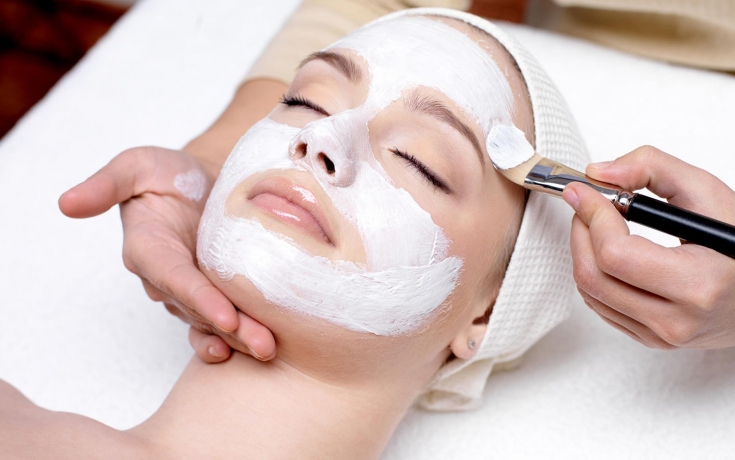Chemical peeling is one of the most popular cosmetic procedures among women all over the world. There are several variations of chemical peeling, which differ in the mechanism of action, indications for use and depth of influence. Almond Peeling – a kind of chemical peel – is an effective and safe cosmetic procedure for cleansing and healing the skin of the face.
For more information about the mechanisms of action of almond peeling, as well as the stages of the procedure, indications and contraindications for the use of this procedure, read on estet-portal.com in this article.
Mandelic acid – key active ingredient of almond peeling
As the name suggests, the main active ingredient of almond peeling is mandelic acid. Due to its pronounced antiseptic properties, mandelic acid was widely used in the treatment of urinary tract infections until the middle of the last century. This substance belongs to the category of AHA (Alpha-Hydroxy Acids), it is also known as "phenylglycolic acid".
Mandelic acid has a large molecular weight, due to which it is not able to penetrate deeper than the stratum corneum of the epidermis.
Phenylglycolic acid is obtained under technical production conditions by hydrolysis of bitter almond extract.
Almond peeling: how the procedure affects the skin of the face
There are several mechanisms of action of almond peeling on the skin of the face.
These include:
1. Keratolytic action: consists in the destruction of keratin – the main structural protein of corneocytes. The subsequent splitting of the structural bonds of desmosomes between corneocytes leads to exfoliation of the horny scales of the surface layer of the epidermis;
2. Antiseptic activity: according to a study published in the World Applied Sciences Journal; in 2014, mandelic acid showed antibacterial activity against Staphylococcus aureus;
3. Lifting action: mandelic acid initiates the activation of fibroblasts and neocollagenesis in the future;
Thanks to the above mechanisms of action, almond peeling helps to improve the color and smooth the surface of the skin of the face, and also restores its firmness and elasticity. In addition, mandelic peeling is an effective method of acne treatment due to the pronounced antiseptic properties of mandelic acid. The possibility of almond peeling at any time of the year – another undoubted advantage.
Follow us on Telegram
Almond peeling: pre-peeling preparation of the skin and stages of the procedure
There is a need to pre-prepare the skin for the almond peeling procedure. To do this, you need to apply a cream containing 15% mandelic acid on your face at night for two weeks. This will also rule out the patient's hypersensitivity to mandelic acid.
The almond peeling procedure consists of the following steps:
1. Cleansing the skin of decorative cosmetics with a lotion containing a 10% solution of mandelic acid;
2. Pre-peeling: applying a 5% solution of mandelic acid to the skin, observing the patient's reaction for 10 minutes;
3. Peeling directly: applying a 30% solution of mandelic acid to the skin. Exposure time: 10-25 minutes;
4. Applying Phenylglycolic Acid Neutralizer;
5. Application of a moisturizing face mask. After that, it is necessary to apply a moisturizing face cream.
In the first week after the almond peeling, intense exposure to ultraviolet radiation should be avoided.

Almond peeling: indications and contraindications for the procedure
Due to its gentle effect on the skin, almond peeling can be used in cases where other types of peeling are contraindicated.
Almond peeling is one of the safest and most effective types of chemical peeling.
There are such indications for the almond peeling procedure:
1. Acne;
2. Hyperpigmentation of facial skin;
3. Seborrheic dermatitis;
4. Hyperkeratosis;
5. Decrease in turgor and elasticity of the skin;
6. Age-related changes in facial skin: small mimic wrinkles.
Almond peeling is also widely used as a preparatory procedure before laser resurfacing and mid-facial peeling. It should be taken into account that the presence of open lesions of the skin, pregnancy and lactation, hypersensitivity to the components of the peeling mixture are contraindications for the almond peeling procedure.
In addition, it should not be performed if the patient has symptoms of a relapse of a chronic herpes virus infection. Thank you for staying with estet-portal.com. Read other interesting articles in the "Cosmetology" section. You might also be interested in : Acid peeling: the anatomy of a chemical peel
Watch the video:







Add a comment